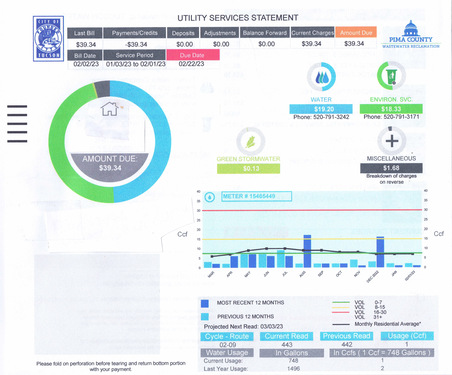Pools impact water and sewer bills several ways:

Evaporation makeup water is the largest part of a pool’s water use. For pools without covers and that are not heated, about 5 feet of water evaporates out each year, and 1 foot of rain falls in, for a net loss of 4 feet of water. Pool covers can substantially reduce these evaporative losses, while pool heaters increase evaporation.
Filter backflushing is the water that you use to clean your pool filters. The amount used depends on the type of filter, with sand filters using the most, diatomaceous earth filters using less, and cartridge filters using the least.
Periodic emptying may be required to limit the build-up of dissolved solids (salts) that results from evaporation. In addition, pools sometimes have to be emptied for maintenance and repairs. Pools are typically emptied and refilled once every 4 or 5 years.
Splash and carry-out water is the water lost due to people using the pool. This is usually a relatively minor portion of a pool’s water use.
Leaks in pool and pump/filter systems can dramatically increase a pool’s water use. These losses are more likely in older pools.
Estimated annual impact on water/sewer bills is $85 - $150.